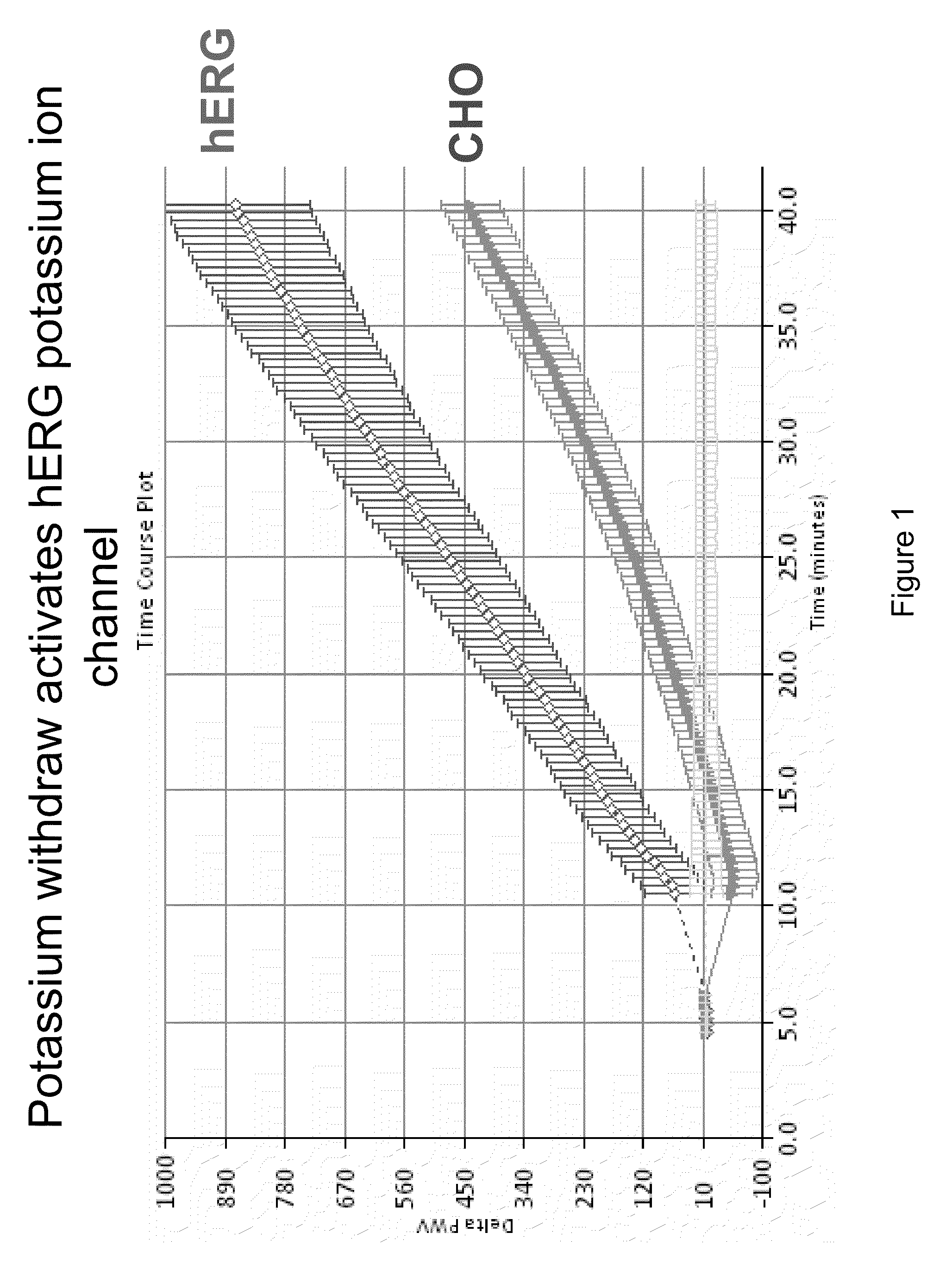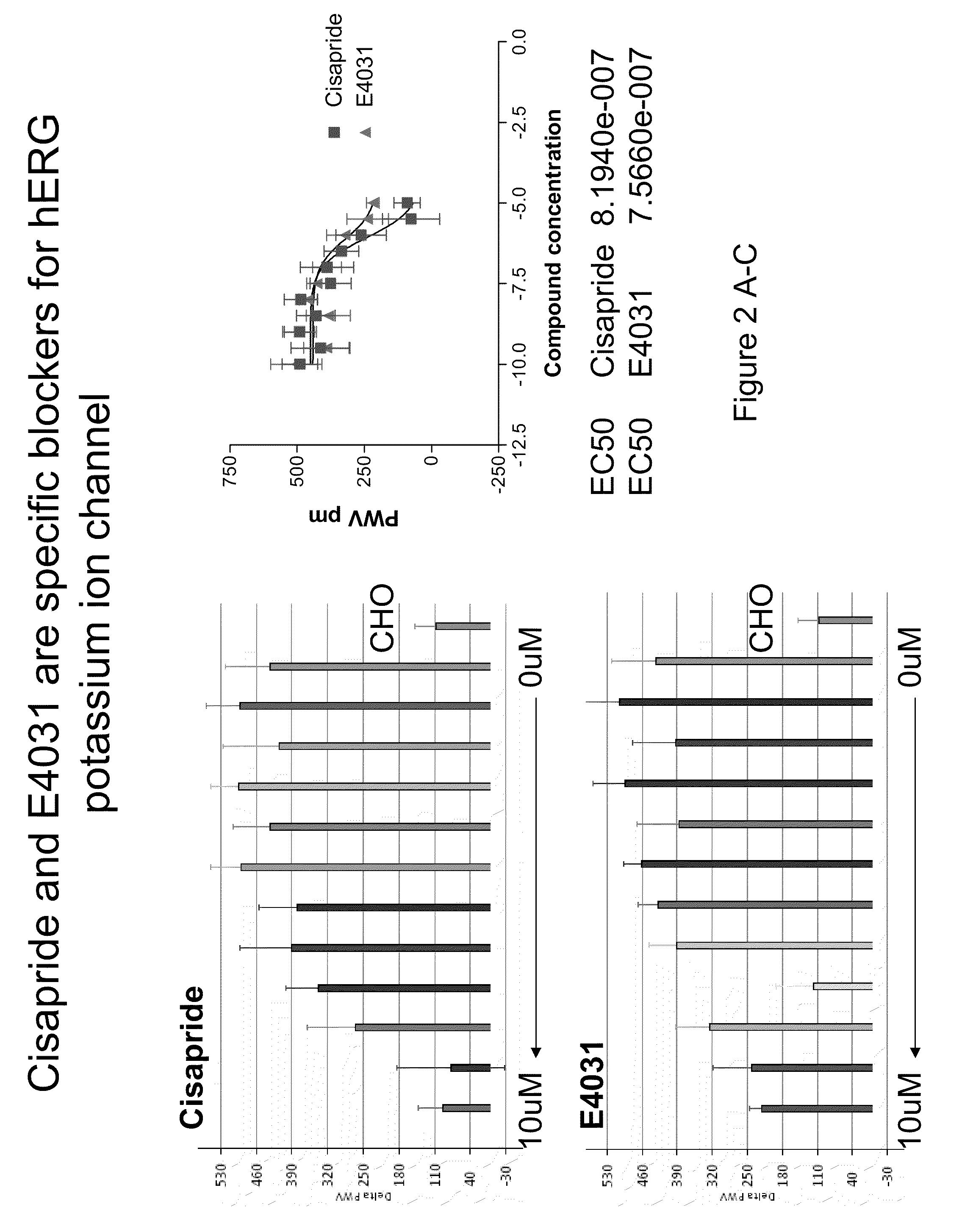Methods for Identifying Modulators of Ion Channels
a technology of modulators and ion channels, applied in the field of methods for identifying modulators of ion channels, can solve the problems of limiting the access to drugs that target only a small portion of the channel function, complex patch-clamp method, and low throughput of test compounds
- Summary
- Abstract
- Description
- Claims
- Application Information
AI Technical Summary
Benefits of technology
Problems solved by technology
Method used
Image
Examples
example
Screening of Inhibitors of hERG Potassium Ion Channels
[0100]This protocol employs potassium free starvation buffer to depolarize cells and thereby open ion channels such that screening ion channel modulators is possible. Colorimetric resonant reflectance biosensor plates were washed with 1×PBS for hydration baseline for 3 to 5 minutes. A PWV was determined for each of the wells. This PWV can be useful to make sure that the biosensor is stable (not drifting) and is uniform in signal across the wells. The plates were coated with 25.0 μl / well of fibronectin for 2 hrs at room temperature. The plates were blocked for 1 hour at room temperature or overnight at 4° C. by addition of 25.0 μl ovalbumin or BSA in PBS to the wells previously coated with fibronectin.
[0101]Starvation buffers were prepared with and without potassium. For 500.0 ml potassium-free starvation buffer the following reagents were used: 25 ml of 3M NaCl for 150 mM NaCl final; 10.0 ml for 20 mM HEPES; 1.0 ml for 2 mM calci...
PUM
 Login to View More
Login to View More Abstract
Description
Claims
Application Information
 Login to View More
Login to View More - R&D
- Intellectual Property
- Life Sciences
- Materials
- Tech Scout
- Unparalleled Data Quality
- Higher Quality Content
- 60% Fewer Hallucinations
Browse by: Latest US Patents, China's latest patents, Technical Efficacy Thesaurus, Application Domain, Technology Topic, Popular Technical Reports.
© 2025 PatSnap. All rights reserved.Legal|Privacy policy|Modern Slavery Act Transparency Statement|Sitemap|About US| Contact US: help@patsnap.com



